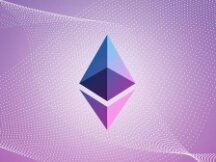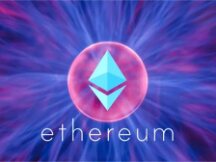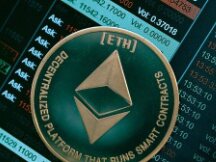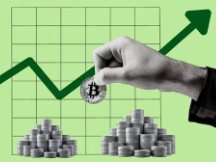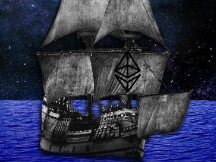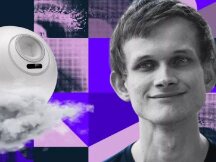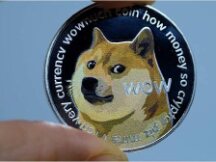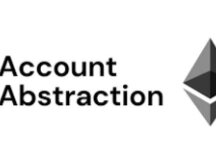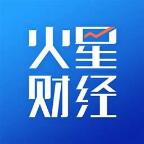Ethereum 2021: continued to champion the largest capacity in the world
Ethereum is the foundation of digital prosperity
It is a solid, secure, reliable and necessary base to support the design of the digital city. These cities are growing rapidly. Since Ethereum is open to everyone, many other users have found reasons to create it.
Marketing uses it as a way to improve finances.
Artists use it to stabilize their work.
The domain uses it as a payment layer.
Communities use it to manage shared resources.
This year, the Ethereum app exploded into public memory. The old-fashioned “web3” was back in vogue as the world began to grasp the prospect of increased internet usage developed by Ethereum.
When it comes to 2018, 2019 and 2020, our goal is to zoom out and see the big picture. The most important improvements made to Ethereum this year are:
1. Phase 2 Coming – After years of development, the L2 protocol has been released to the mainnet and the potential of Ethereum is expanding.
2. Designer to Key - NFTs are everywhere and artists are making millions of dollars using Ethereum.
3. Core Protocol Upgrades – The Ethereum R&D community has undergone a number of upgrades to prepare for the transition to Stake Proof.
4. DAO through a transition - DAO has become a powerful community management tool, raising thousands of dollars and attracting new users.
Before we get into the above topics, let's stop and look at the development of Ethereum. Over the past few years, we have tracked several key metrics of Ethereum's contextualization attempts. Some of these measures crossed the threshold this year.
What are blockchain payers used for?
For the second year in a row, Ethereum is the most searched blockchain in the world.

The figure shows the total exchange rates for the L1 blockchain option. This is the total cost of using each L1 that sends the exchange or interferes with the smart contract. Together they represent the value of the total blockchain "blockspace", i.e. the total value of blockchain transactions per year.
All prices are an indicator only and when used alone do not fully represent the price or consumption of blockchain electricity for consumers. However, it shows the user the price comparison of each blockchain. In a successful business, people are willing to pay.
Expanding the comparison to include apps, L2 networks, and other L1s, we found:

All Pink is an application built on Ethereum, like Uniswap or ENS. For these applications, all these costs are not blockchain exchange fees, but other types of fees that users may have to pay to use the application (such as fees for exchanging resources provided by the service ).
Surprisingly, the cost of using applications developed by Ethereum by 2021 will exceed the total cost of using all other L1 blockchains.
As Ethereum blockchain demand extends beyond all other blockchains, you may want to look elsewhere for a useful comparison. This year, we were able to compare the cost of using Ethereum L1 with the revenue from payment networks such as Visa and Stripe.

All exchange rates and company revenue are unmatched (Visa and Stripe generate revenue from wallets other than those paid directly by users, and Ethereum can, many Stripe cannot). However, they indicate the market size and value of Ethereum.
How much does Ethereum cost?
An easy to use case for blockchain is to switch assets. What has changed compared to Ethereum this year? Ethereum has become the blockchain to solve the world's largest asset since overtaking Bitcoin in mid-2020.

Ethereum data includes all major ERC20 with over $500 million in revenue. Bitcoin data includes Omni's USDT. As it does not include all Ethereum assets, this report underestimates the total Ethereum transaction volume. data from Visa (annualreport.visa.com) and CoinMetrics (coinmetrics.io);
Ethereum moved around $11.6 trillion this year, more than Visa and more than double Bitcoin.
the lock rate in DeFI
Finally, the total value of all lock assets in the DeFi protocol can be tracked. "Locking an asset in DeFi" means that the user places money in the process, usually in return, in exchange for permission to use the asset (e.g. cash).
Ethereum's DeFi sector still holds the largest volume of closed assets.

Again, we need to find comparative data outside of the blockchain ecosystem. The total value of DeFi pegged to Ethereum ($153 billion) in 2021 will exceed the assets managed by Robinhood ($80 billion) and Bridgewater Associates ($140 billion).
Up to level 2
After years of research and development, the technology that will measure Ethereum was developed this year. Ethereum's trading capabilities are not limited to Ethereum Layer 1.
Instead, it is the Ethereum L1 capability in addition to the capabilities of all "Process 2" processes that benefits Ethereum security.

L2 data is incomplete due to restrictions on public data. All information here: https://docs.google.com/spreadsheets/d/1-Is51Do_AgatnUsoxo-Iy7B0clCyxf1VN_gDt8mtly4
This figure shows all transactions in Ethereum in 2021, including L1 and L2. By 2021, Ethereum's L1 generates 1.2 million transactions per day (or about 15 transactions per second). As Process 2 became more functional, Ethereum's performance potential began to increase, and the cost of integration (at the top of the graph) began to increase.
All L2 processes are still in the early stages of exporting, and some have not temporarily removed all reliability (see L2Beat for details). There are also significant differences in technology that are displayed here. For example, the StarkEx chain is technically Validiums. In other words, the proof is kept off the chain, not off the chain.
As the L2 protocol continues to mature and gain market share, the L2 portion of the image will grow until it far exceeds the capacity of L1. "Ethereum" is not a rule, but a community of processes that share L1.
You may have read that Ethereum is expensive or slow, but that's because people are doing the comparison incorrectly. Ethereum was the first blockchain mature enough to create multiple product-ready L2s. Fuel costs are still high for some applications in L1, but 2021 is the future impact that most users will only experience with Ethereum on L2.
Currently, the largest L2 transition has been made on a special L2 protocol application called "ZK rollup". L2 is dedicated to certain types of applications, such as trading or the simple exchange of tokens.
The ZK deployment ecosystem launches Ethereum in 2021.
Loopring launched the zkRollup exchange in 2020. We completed v2 in early 2021 and added support for NFT advertising and marketing in August 2021.
Matter Labs launched Payment Aggregation (zkSync) in June 2020, integrating with wallets like Argent and apps like Gitcoin (we also run on "zkSync 2.0" compatible with EVM).
Aztec announced private payment ("zk.money") in March 2021 and added support for DAI stability in April.
Many projects have used Starkware's StarkEx platform to create Validiums, including:
DeversiFi (decentralized exchange) started rolling in June 2020.
ImmutableX (NFT exchange) started rolling in April 2021.
dYdX (defi trading platform) will start counting in April 2021.
Sorare (a fantasy football NFT project) launched the StarkEx roundup in July 2021.

L2 data is incomplete due to restrictions on public data. All information here: https://docs.google.com/spreadsheets/d/1-Is51Do_AgatnUsoxo-Iy7B0clCyxf1VN_gDt8mtly4
This year saw two major members of the Rollup ecosystem: Arbitrum and Optimism.
Arbitrum and Optimism were the first consolidations that went into the making. This means that each rollup acts as an extension of Ethereum. It is "EVM compatible". Users can easily move between Ethereum-based assets, developers can submit contracts and Solidity applications in rollups, and users can interact with them.

L2 data is incomplete due to restrictions on public data. All information here: https://docs.google.com/spreadsheets/d/1-Is51Do_AgatnUsoxo-Iy7B0clCyxf1VN_gDt8mtly4
Arbitrum went public on the mainnet on May 14 and dropped from the free listing on August 31. Optimism launched on the mainnet a few months after August 19 and de-whitelisted on December 16.
As the L2 ecosystem grows, more and more users are investing here. At the time of writing, the L2 protocol is around $6 billion.
Content items
For many years, crypto communities have been working to measure blockchains using "Process 2" technology. Bitcoin payments as discussed in 2012. The chain will eventually enter Ethereum development as a niche solution, but will not be able to measure smart contracts.
In 2017, Vitalik and Joseph Poon developed a new drug called plasma. The main idea is to continue Ethereum by creating a free blockchain that will be pegged to Ethereum and secured by smart rules and business processes.
This study resulted in a new process called "Summary". Based on the concept of Plasma, Rollups extends Ethereum by creating a unique L2 blockchain that is cheaper and faster to use while extending the security of L1.
The application is available in a series of lines and the user interacts directly with the channel. Under the circumstances, the protocol ("all") of all operators and keeps the history of Ethereum L1. This information allows these companies to benefit from the security features of Ethereum.
However, there are two different ways to do this, so there are two types of design differences: optimal rollups and zero-knowledge rollups.
In known-zero aggregation, cryptography is used to prove commercial viability and the evidence is stored in Ethereum. Most of the data can be deleted (i.e. it does not need to be kept on the chain) and only a small part of the data is deleted. However, it suffices to prove that the conversion is numerically valid.
Today, there are many special application rollups covered above. However, the expansion of the Zero Knowledge (ZK) rollup developed by teams such as Matter Labs, Starkware, Polygon Hermez, Scroll Tech and the Security & Scaling Explorations Group is still ongoing. .
To simplify the tricky concept: ZK rollups work by converting script job numbers to special numbers. This equation stores the actual evidence stored in the mainnet.
Interpretation of these equations is easier when resources are limited. For example, if you just want to send a simple token. The equations of this special application are easy to design.
On the other hand, it is more difficult to identify equations that can accept all the access numbers and to generate proofs of them. This is an issue creating ZK content that can be used in illegal contexts.
This "universal" calculation (also called "EVM equivalent") can be accomplished much more easily using optimism.
With the highest reliability, the L2 rollup chain extracts the data stored on the L1. However, in general, there is no real "proof" that the results are valid. The process is good. He thinks every block is valid, but still has the right to prove it if necessary.
It's best to signal multiple data transfers to the chain (convert small data using the zero-knowledge process) because the data needs to be stored. allow someone to prove it later. However, comprehensive goal optimization rollups (such as Arbitrum and Optimism) are already in production today, as new cryptographic innovations are not needed.
Either way, it means you trust the meeting is over. Once an ETH sender is on delivery, proof of that change is available in Ethereum and you can revert ETH to L1 if needed.
The long wait for level 2 is over. I'm here now. It is very unevenly distributed. It will take months for apps, exchanges and wallets to support L2 and help users make the transition.
The founder of Ethereum to be valued.
In last year's blog post, we saw that the Ethereum "developer" is showing growth. Cryptoart volume soared in December, with more artists experimenting with Ethereum tools to capture the value of their work, and the next year exceeded expectations.
In 2021, artists, musicians, writers, and other creators will come together to earn $3.5 billion using Ethereum. This money makes Ethereum one of the biggest developers in the world.

Note: Ethereum data is for 2021, all other data is for 2020 due to public data restrictions. All documentation is here: https://docs.google.com/spreadsheets/d/1-Is51Do_AgatnUsoxo-Iy7B0clCyxf1VN_gDt8mtly4/
By 2021, Ethereum will generate more revenue for artists and musicians than OnlyFans or Patreon, almost on par with the world's largest producers.
What is Creative Marketing?
Ethereum's "Creator Economy" is a suite of tools, services, and businesses that enable developers around the world to use Ethereum to monetize their work.
To date, the "creative business" on the Internet is dominated by the major platforms. They often use similar models where they make money from advertising or subscriptions on platforms like YouTube or Spotify and then pass a small portion of the revenue on to developers. .
These business models make Spotify worth $40 billion. However, this is a bummer for most performers who get a small fraction of each channel. By 2020, only 13,400 artists will earn more than $50,000 on Spotify (out of 1.2 million artists on the platform).
Many artists volunteer by posting their work on Instagram or Twitter, the artists pay for the "intervention" and the platform benefits.
Ethereum provides new tools for developers to monetize their work. A special tool is NFT. A digital certificate identifies ownership of digital information, including art, music, photos, videos, or games. By 2021, platforms like OpenSea, Rarible, Foundation, Zora, and Mirror will allow artists to create, sell, and trade NFTs.
The NFT ecosystem is at a very early stage. A year ago, the NFT industry was almost non-existent. Today, most of the packaging industry and consumers are focused on one platform (OpenSea). However, there is a lot of work to be done to develop competitors, including exchanges. As evidenced by the history of decentralized (“dex”) exchanges and the tremendous growth of Uniswap, decentralized projects transform ownership for users to gain an understanding of centralized exchanges.
The rapid expansion of the NFT market has attracted the colors of the theme. Steph Curry, Eminem and Shaquille O'Neal become Bored Apes. Adidas also bought a digital pitch and launched its own NFT series. Budweiser, Paris Hilton, Trey Songz, Drake Bell, and Shopify CEOs are all enrolled in ENS and signed up for their Twitter account.
Along with the rising prices and attractiveness of NFTs, the emergence of Ethereum's founders has led to a turning point in the community.
Throughout most of the history of the crypto industry, most people who have lived using this technology have fallen into several categories: investors, developers, or employees of crypto companies.
But in 2021, everything has changed.

This year, more and more people from new and diverse backgrounds have started using Ethereum for financial support. By 2021, people will be able to earn money using Ethereum without any existing resources, knowledge, financial or historical background, and without having to work on crypto startups.
This developer is no ordinary user, but a key member of the Ethereum community who lives there and has a significant interest in the ecosystem. This transformation has brought in new people, ideas, communities, skills, thoughts, and concerns to change the Ethereum ecosystem and impact its future.
In particular, many new Ethereum users worry about the power consumption of proven devices. Fortunately, they are involved in a community that raises these concerns. Since 2014, the Ethereum community has been aware of the evidence of overwork and has been working to end it.
3. Base protocol update
In 2021, the Ethereum community made significant progress in the transition to stakeholder proof, including two major reforms that resulted in changes such as new trading costs and many small improvements.
The research, development, collaboration and application of these innovations are carried out by independent organizations around the world through public research and collaboration. As always, Ethereum is a store, not a church.
Most of the work is done by teams that create and manage clients. Ethereum is the only blockchain with many independent groups actively developing software users.
User diversity is important to the Ethereum community, but in practice it remains difficult. While differentiated users help prevent the emergence of consumer-specific vulnerabilities that can destroy their benefits, it also functions as a regulatory assessment captured by the entire important group of manufacturers. Ethereum is a "spec-original" blockchain, which means that the rules of the process are independent of any particular software or the process of the people holding that software. Everyone can take advantage of the unique and create their own customers to compete with existing customers.
This year, the user group and the wider R&D community made two major changes to the Ethereum mainnet: "Berlin" in April and "London" in August. These updates include a number of changes. Specifically, EIP-1559 improved Ethereum's business value (details below), but also included major changes such as EIP-2929, which improved Ethereum's protection against DOS broadcasts. .tsam.
The team also upgraded "Altair", a proof-of-concept chain connected to the Ethereum mainnet, to the "Beacon Chain" starting December 1, 2020. The Altair modification will allow two light users to reach levels optimal and to adjust their support and main characteristics.
The backdrop to all of this work is the promotion of “fusion”. This is when Ethereum proof of work is permanently closed to proofs of stake (details below).
At the time of the transition, the Ethereum mainnet was still running and defending millions of dollars without interruption.
EIP-1559 - Enterprise Change
On August 5, EIP-1559 was released on the Ethereum mainnet. The update introduces several changes to Ethereum's "market value," a set of rules that define the market that users pay to collect transactions on the Ethereum blockchain.
EIP-1559 has several purposes.
Reduce the incidence of overspending by customers.
Reduce the latency of operations.
It improves the security protocol by reducing the potential for integration and makes DOS attacks more expensive.
Burn some of the added value to ETH and improve the security of Ethereum.
Like most Ethereum protocol changes, it is the result of years of research, development, experimentation, and discussion within the Ethereum community. After first sharing his ideas in a blog post in 2014, Vitalik published an article on ethresear.ch in July 2018 and the 2019 EIP (“Ethereum Improving Ideas”) article. Two years of review and consultation followed, including Tim Loughgarden.
EIP-1559 acceptance has not yet been obtained. Some wallets, exchanges, and other apps require software upgrades to get the most out of the new rates.

Image : Pintail (https://pintail.xyz/posts/gas-market-analysis/)
This figure shows an analysis of the Ethereum "Type 2" (using EIP-1559) and "Legacy" industry. At the end of 2021, around 35% of Ethereum companies are still implementing “traditional hereditary” exchanges. However, commercial real estate can benefit from EIP-1559 by improving the oil forecasting system.
Several wallets and exchanges have opened EIP-1559 platforms, including MetaMask, Rainbow, MyCrypto, Post, Trezor, Brave, Coinbase (and Coinbase Wallet), Blockfi, and FTX.
Four months into the transition, EIP-1559 has achieved its goal of improving user experience on Ethereum.

Image : Pintail (https://pintail.xyz/posts/gas-market-analysis/)
In this graph, the blue line shows the average price of oil for the existing industry and the orange line shows the average price of oil for the type 2 industry (EIP-1559). After using EIP-1559, industry type 2 is on average lower than normal industry.

Source : Pintail (https://pintail.xyz)
The diagram shows the benefits in more detail. The blue line shows the difference in oil prices between the two industries since the activation of EIP-1559 (the higher the line, the greater the cost savings). Normal offers are always 10-20 gwei more expensive.
EIP-1559 also appears to reduce the risk of abortion without pre-users having to pay higher inclusion fees (which many users are aware of over time). If you want to know more, check out this article on pintail, this article on Coinbase and this article on blocknative.
to be hot
EIP-1559 also describes conversion that is rejected ("burnt") as part of the cost that each user pays to use the process. This means that each operation removes a certain amount of ETH from all equipment.
This creates an idea to add value to ETH, a key part of our larger vision to become Ethereum the most secure blockchain in the world.
Ethereum's approval mechanism is based on a fraction of the cost of ETH. This is true because in PoW miners pay in ETH to secure the network, and in PoS because participants pay in ETH to secure the network and must join ETH to ensure sexual security sharing.
Burn part of the cost to establish the relationship between the application protocol (market value) and the cost of ETH itself (low cost). Since August 2021, 1.32 million ETH have been burned.

The yellow lines indicate the days and weeks of the negative output when the EIP-1559 flames completed the rebroadcast of each block, with enough cost to cover Ethereum. This is the result of the current PoW system, and if we switch to PoS next year, the coverage will be lower.
suck
The migration from proof-of-work to proof-of-stake is a first look at the Ethereum community. Proof of functionality is needed to begin early blockchain design experiments, but in an average of 12 years it has become clear that design is improving. The design is safer and does not use too much force for safe operation.
Ethereum Proof of Stake is the culmination of over 7 years of research and development. Why take so long? Since the beginning of this process, the Ethereum community has denied the impact of the distribution.
Different certificates of organizations exist today on different chains, but most of them receive significant recognition in terms of decentralization. They rely on a kind of delegation, which means that the real role of block recognition is focused on certain less important participants.
While some communities live on, Ethereum has undergone a major overhaul. With the development of the latest technologies and technologies, Ethereum is as distributed and secure as possible. The evolution of BLS signing applications in Ethereum PoS allows thousands of nodes to join an agreement, so Ethereum PoS does not require authorization. Thousands of self-proclaimed members join rather than a handful of professional organizations.
At the same time, Ethereum's design retains the custom process for lower stakes. It's rare that every laptop user can participate at home in a place like professional services.
Ethereum's proof-of-stake system works. It is simply not used to protect user activity. Ethereum's proof of stake, Beacon Chain, has been operational since December 1, 2020 and has operated without major incident.
Last year, users joined over 8 million ETH on the Beacon chain, worth up to $26 billion.

Source: @Carvas (https://dune.xyz/queries/252741/473336)
The rest of the work is to integrate existing Ethereum L1 into a new proof of concept to replace the proof of work.

Source : (https://twitter.com/trent_vanepps)
As the beacon chain buzzes, the Ethereum community has become much bigger in terms of integration.
In April, the Rayonism project saw developers steal testnets integrated with the original design share.
In October, consumers flocked to Greece for the Amphora Retreat, resulting in a short period of time for many consumers to be tested.
In November, Kintsugi testnet continued to work on long-term multi-user tests based on particular facts.
Once the specialization is complete and the new testnet is widely used by end users and developers, we will use the existing testnet as a test on Merge.
If the experiments are successful, the focus is on the final stages of the mainnet integration work and the completion of proof of perpetual operation.
Diversification of users
Ethereum has multiple users, each user has a unique set of all users they can share with proof of stake. The differences between today's consumers are not good.

Source : https://twitter.com/sproulM_/status/1481109509544513539
Ideally, the user should have no more than 33% of the network. If each user is less than this example, the risk of seeing the user's line affecting the network is reduced.
The difference between the best consumers is the objective theoretically achieved. Ethereum has 4 top competitors (Lighthouse, Nimbus, Prysm, Teku) and the 5th top competitor (Lodestar) recently appeared.
It would be best if no user had more than 50% of the network before onboarding. Without too many (and rarely) instructions on fork chainsaws, retaining less than 50% of the customer can be an inconvenience for the manufacturer to solve the problem without major collision.
The shift to more different consumers is to everyone's taste. Even most of our consumer products do. Thanks to this, Prysmatic Labs is aware of the facts and works to reduce them in most cases.
Expansion of the staking ecosystem
The Ethereum Participation Certification allows anyone from interested individuals to work for organizations, join ETH, and participate in network security. As community partners have grown, so has the ecosystem of resources, tools, architecture, and applications.
Rocketpool is a joint venture that will be announced in November 2021. Rocketpool is a platform that allows users to deposit ETH and share unrestricted freebies directly on the staking infrastructure. Essentially, users of the protocol deposited the secure ETH data through a cellular carrier integrated by the Rocketpool protocol. The decentralized staking protocol is an important infrastructure to create a healthy staking ecosystem. At the time of writing, 74K ETH is involved in Rocketpool.
Lido is still an important technique, but with increased confidence in its current use. Until January 2021 (two months after the release of Beacon Chain), Lido will provide 100K ETH as per collateral. 33,000 depositors deposited 1.6 million ETH worth up to $13 billion at the Lido by the end of the year. Lido has recently won the success of different clients through a network of personnel providers.
At the same time, the tools in the staking ecosystem are multiplying.
The StakeHouse community has released eth-wizard (a CLI installer for enthusiasts) and Wagyu (a one-click Eth2 staking installer).
Existing hardware providers Dappnode and Avado have expanded their Ethereum business portfolio.
Stereum releases the open space of the installation device.
Do you want to join the EPF? The best place to start is ethereum.org.
DAO crosses the tipping point
One of Ethereum's earliest dreams was to help: Ethereum allowed an individual to write unconventional rules, which could be used to create organizations or administrations that allowed groups of voters or other joint decision makers. .
The DAO ecosystem has an important time of its year. Simple yet effective technology allows existing DAOs to do the job, while new entrants push the boundaries of what DAO can do and who can be part of it.
The number of monthly special voters joining the DAO at Snapshot increased throughout the year and exploded in November and December.

Source: Snapshot
Today, there are hundreds of DAOs where you can see your daily activities, pay bills, create products, and vote on shared funds. Ethereum's DAO manages over $16 billion in total assets.
But first, what is the DAO?
"DAO" is used to describe a variety of models. Generally, DAO refers to a group of people who jointly manage something on a blockchain-based chain such as Ethereum. Sometimes it's cash (like ETH or DAO savings tokens), but it can also include restrictions by on-chain procedures like NFT, MakerDAO, or marking all of the above.
DAOs have been in Ethereum since 2016, but those early experiments were much more scientific than reality.
However, in recent years, DAOs have become more relevant. The first major driver is the DeFi protocol, which seeks to decentralize and give control of the process to root users who vote for tokens ("Management Tokens").
The bottom-up model developed from processes such as Compound in 2020 has become a de facto model since the release of several DAOs like Uniswap in September 2020.
DAO's growth in 2021 is significant because it will occur outside of the first participant, the DeFi protocol. These DAOs are beginning to provide a wide range of design spaces for organizing strings.
Ethereum Naming Service (ENS). First released in 2017, ENS is a custom naming app that allows users to create friendly names (yourname.eth) that can be used with Ethereum accounts, receive non-ETH cryptocurrencies (for example, like bitcoin), or use it as a website. URLs. . not found. In 2021, ENS established a DAO to enforce some of the limitations of the ENS protocol and community funding to support the ENS ecosystem.
Constitution DAO (people). In just a few days in November, netizens flocked to the internet to raise $44 million to buy a copy of U.S. Law. A total of 17,521 other accounts contributed to this work. The project received significant support and interest in the media, with a group of unscrupulous businessmen discussing competition from new representatives on the internet and the old financial community.
PleasrDAO started with a tweet and quickly grew into an investment organization. PleasrDAO explores other sources of DAO design space. It is not a big organization with tens of thousands of members, but a small organization where members raise funds for a joint venture. In particular, PleasrDAO bought some of the best-selling products, such as the unreleased album Doge 1/1 or WuTang.
Friends with Benefits (FWB) is an online social community that offers membership in the form of a $FWB token membership. These tokens can be used to control access to multiple online and offline sites, including group chats, gatherings, dinners, parties, and more.
MakerDAO started as DAO, but developed a few prototypes in 2018. MakerDAO is the creator of Ethereum's first decentralized stability coin and one of the best performers of DeFi to date, the DAI stability coin. This year, MakerDAO delivered on its return promise by closing the base and delivering the shares of the Development Plan to the insurer-managed DAO.
DAO is a comprehensive toolkit that can provide a wide range of design spaces. Private keys and smart contracts allow us to create any system that allows people to control chain and process assets.
As a result, we see a wide range of applications for DAOs. Before long, it can be hard to talk about in a meaningful group. DAO is a way to optimize the process by managing its design, a tool for online communities to quickly and transparently raise funds to achieve goals, a new way to collaborate to fund new types of communications and resources public. . The path.
DAO's growth this year has benefited from the use of more sophisticated equipment. Many DAOs use simple tools together. For strong chain contraction, usually use a fork from the hardened process. Voting itself is governed by activities such as snapshots, and personal polls are discussed and discussed in forums as well as speeches.
2021 will expand the tools available to develop and manage DAOs.
Mirror reported on the process to help people create "media DAOs". In other words, you participate in advertising and have content created by Mirror.
Coordinape moves away from the Yearn community and provides a basis for decentralized groups to come together to determine how DAO members are paid for operations.
Rabbithole has introduced tools for new users to join DAO and improve their skills and certifications to work in DAO.
Future governments, such as Wyoming, developed new legal frameworks to simplify DAO composition and publicity.
While DAOs measure to meet the needs of millions of people around the world who want to use them, DAOs do not shy away from challenges and difficulties to overcome. Some key challenges we hope to address through 2022:
Most DAOs today use some sort of voting token. This means that decisions are made based on the percentage of members of a "Governance Token". The coin-voting system has many negative aspects. Sybil tolerates experiments such as Human Proof and BrightID provides a way to create human-based checks rather than tokens.
Identify management and operating models that enable divisions to develop productive and collaborative products.
Legal processes can be very slow to adapt to new norms of human activity, and DAOs are not unique. The absence of a legal basis would put the members of the DAO in danger. Laws around the world continue to do so. For recent work in the United States, see this article by David Kerr and Miles Jennings.
New organizations have emerged to address these and other issues. The DAO Research Collective is an organization whose mission is to make it easier for DAO founders to find answers and information to these questions.
to start
Like every year, too much is happening in the Ethereum ecosystem to fit into one blog post. However, Ethereum is bigger than the above 4 points.
ID: Ethereum Domain Services (ENS) is growing, reaching hundreds of thousands of users, hundreds of partnerships and a new home in the DAO community ($1.9 billion) to promote the further development of the 'ecosystem. Evidence of People and BrightID were used as an anti-magic platform, and using the Ethereum accessibility model became popular and having Ethereum ID became fashionable.
Gaming: Axie Infinity has grown to an incredible 2.9 million users, making it one of the top Ethereum game developers. New cryptocurrency organizations like the Yield Guild are gaining traction with gaming ecosystems making money from games. Skyweaver was released by Polygon, Dark Forest release v0.6, and they continued to build a culture behind their crypto-based gaming channel.
Public Financial Assets: CLRFund (a policy that allows anyone to run their own CLR) completed the trust building and helped fund many finances. Gitcoin is expanding its CLR trading portfolio, raising over $24 million annually. Optimism experimented with the financial recovery of public goods, and the Ethereum Foundation created an incentive for consumers to fund and continuously improve customer service. The new public product organization, 0xPARC, began by focusing on application-level innovation.
2021 has been an exciting year for the Ethereum community as the ecosystem transitions to core and proof of work comes to an end.
When the company moves in your favor, it's easier to feel like a winner and easier to get distracted. But cities do not create themselves. See you on the other side of the proof of work.

Scan QR code with WeChat

